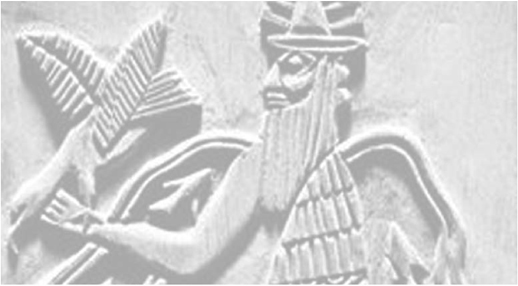Middle Eastern MythologiesWhat Do We Mean By the Middle East? |
Were there prehistoric mythologies in the Middle East? |
The term has taken on various meanings over the centuries. With varying degrees of accuracy it has been used synonymously with “the Near East,” “the Levant,” and “the Fertile Crescent.” In colonial times the British meant the Balkans and Asia Minor (Anatolian Turkey) when they spoke of the “Near East.” The Fertile Crescent is the fertile land that arches around the Syrian steppes and stretches from the eastern Mediterranean coastal regions, beginning with Egypt in the west, southern Anatolia (Asian Turkey) in the north, and Mesopotamia (Iraq)—a term which means “between the rivers” (that is, the Tigris and the Euphrates)—in the east. “The Levant” is a term that Europeans once used to refer to the countries bordering the eastern Mediterranean. “Levant” is derived from the French word meaning “rising” and refers to the rising of the sun in the east, or the “Orient.” In modern times “Middle East” has come to refer, in the geo-political context, to all the places included in the terms discussed above, as well as having been expanded somewhat. It refers generally, then, to the areas of Asia, Africa, and Europe that include present-day Turkey, Israel, the Arab countries (including Egypt), and usually Iran.
The figurines and temples at Anatolian sites such as Çatal Hüyük, discussed earlier, indicate a mythological consciousness before writing developed. Figures appearing to be an enthroned Mother Goddess and a Bull God are clear indications of mythology—perhaps associated with fertility and developing agriculture. Graves in Egypt, Palestine, and Mesopotamia suggest ritual burying, perhaps pointing to a belief in an afterlife. Mesolithic (Middle Stone Age, c. 10,000–c. 8000B.C.E.) sites belonging to a culture known as the Natufian in Syria and Palestine contain figurines of embracing couples, suggesting a sacred marriage.
Natufian grave pits in conjunction with grain storage pits possibly indicate a fertility cult associated with early agriculture. Pre-Sumerian Ubaid sites in Mesopotamia contain ruins of what appear to be religious structures, the precursors of the famous Sumerian and Babylonian temple-ziggurats.
It is not surprising that as nomadic hunting-gathering lifestyles were supplemented or replaced by settlements dominated by agriculture and animal husbandry, cults devoted to fertility with accompanying explanatory stories would have emerged. Prehistoric mythology can only be surmised, however. “History,” in the strictest sense of the word the preserved narration of events, by definition, begins with writing.

